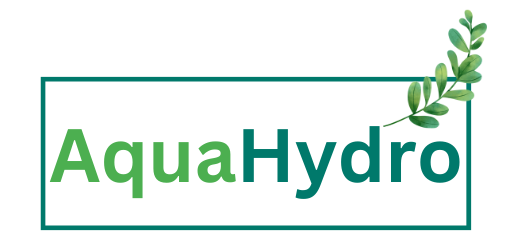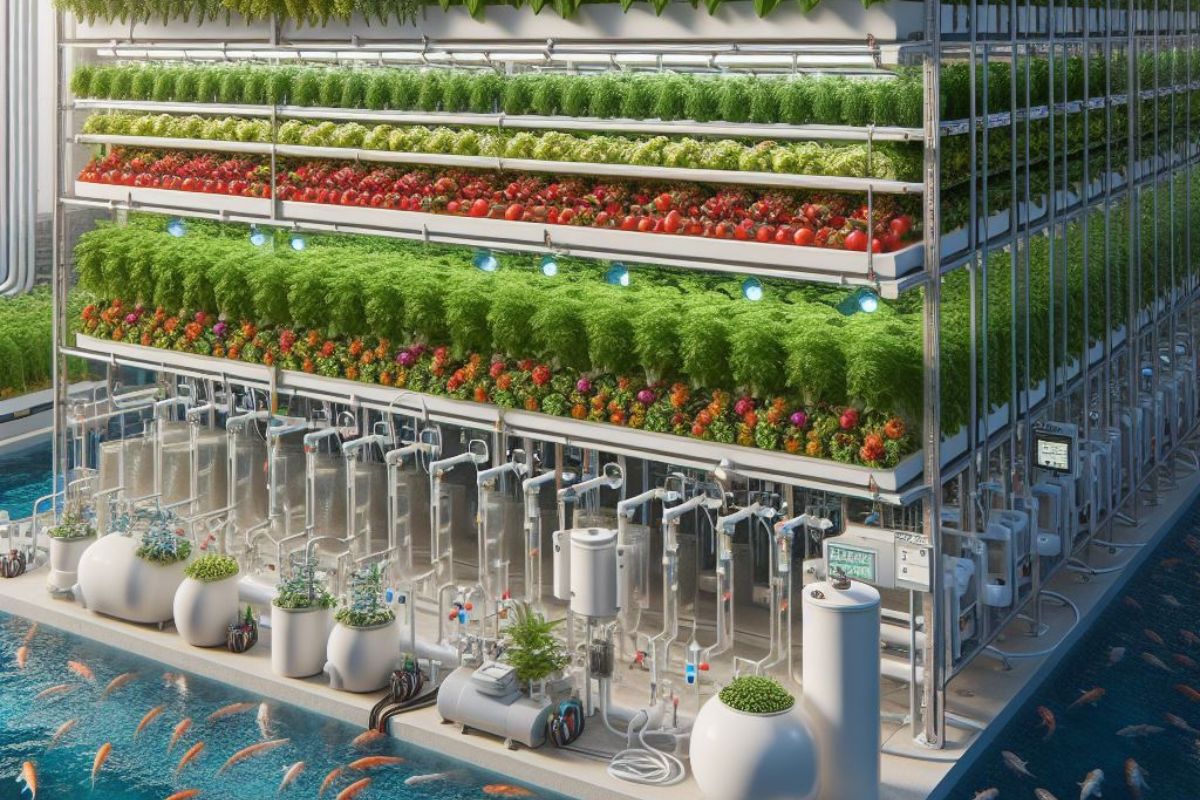Commercial Aquaponics Systems have emerged as a revolutionary solution that not only maximizes productivity but also minimizes environmental impact in the ever-evolving world of sustainable agriculture. At AquaHydro, we are dedicated to providing you with the most cutting-edge information and insights into the realm of commercial aquaponics. In this comprehensive guide, we will delve into the intricacies of commercial aquaponics systems, shedding light on how they work, their benefits, and how you can set up your very own successful aquaponics venture.
Understanding Commercial Aquaponics Systems
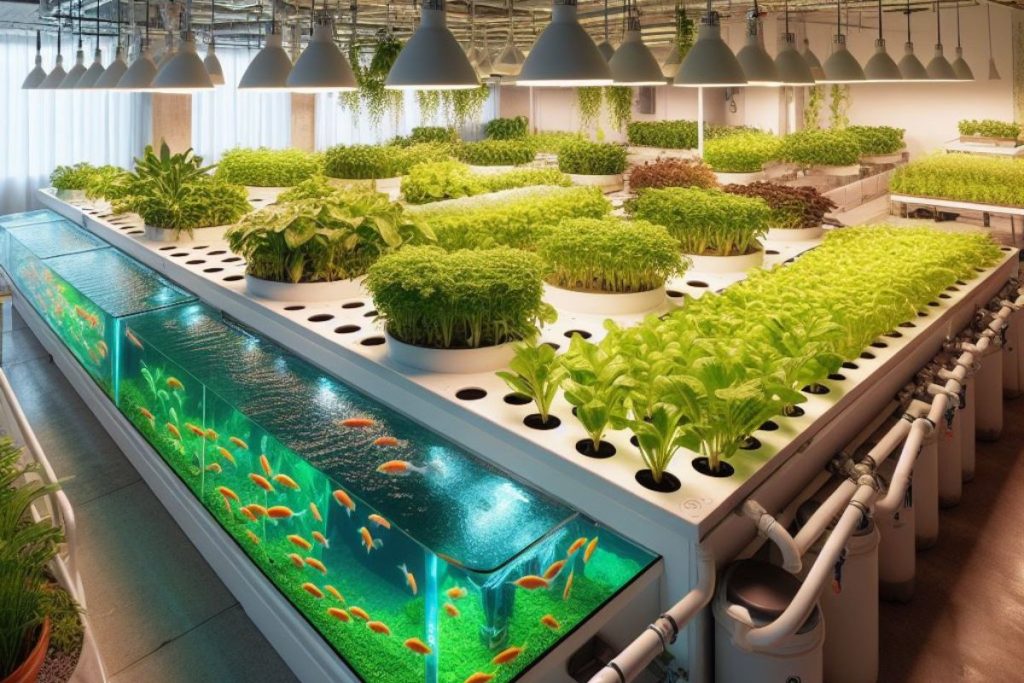
Definition of Commercial Aquaponics System
Commercial aquaponics involves the cultivation of plants and fish in a symbiotic environment. Unlike traditional farming methods, this system capitalizes on the natural processes of nutrient cycling between fish and plants. This method results in a closed-loop, sustainable ecosystem.
Importance of Sustainable Farming Practices
As the global demand for food continues to rise, the need for sustainable farming practices becomes paramount. Commercial aquaponics addresses this challenge by minimizing resource use, reducing environmental impact, and providing a reliable source of fresh produce.
Components of a Commercial Aquaponics System
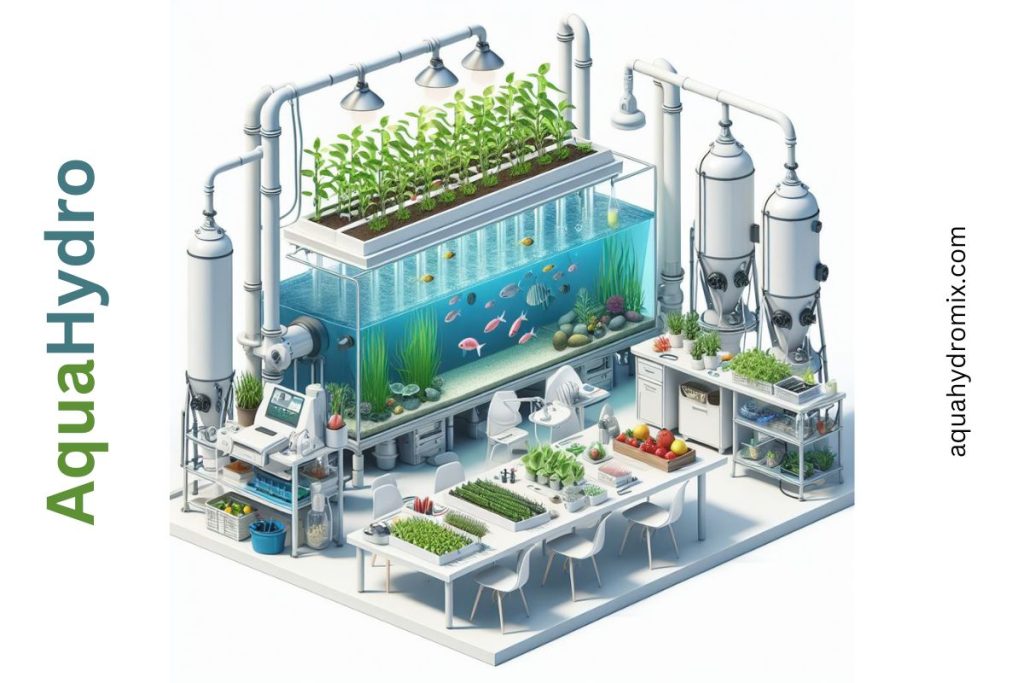
Fish Tanks and Species Selection
Selecting the right fish species is crucial for a successful commercial aquaponics venture. Tilapia, trout, and catfish are popular choices due to their adaptability to aquaponic environments. Properly maintained fish tanks ensure a healthy aquatic ecosystem.
Hydroponic Grow Beds
Hydroponic grow beds play a vital role in the system, providing a substrate for plant roots and facilitating nutrient absorption. This component is where the magic happens, as plants thrive on the nutrients derived from fish waste.
Beneficial Bacteria in the System
Beneficial bacteria are the unsung heroes of commercial aquaponics. They convert ammonia from fish waste into nitrites and then into nitrates, which serve as essential nutrients for plant growth. Understanding and maintaining the right balance of these bacteria is key to system success.
Benefits of Commercial Aquaponics Systems
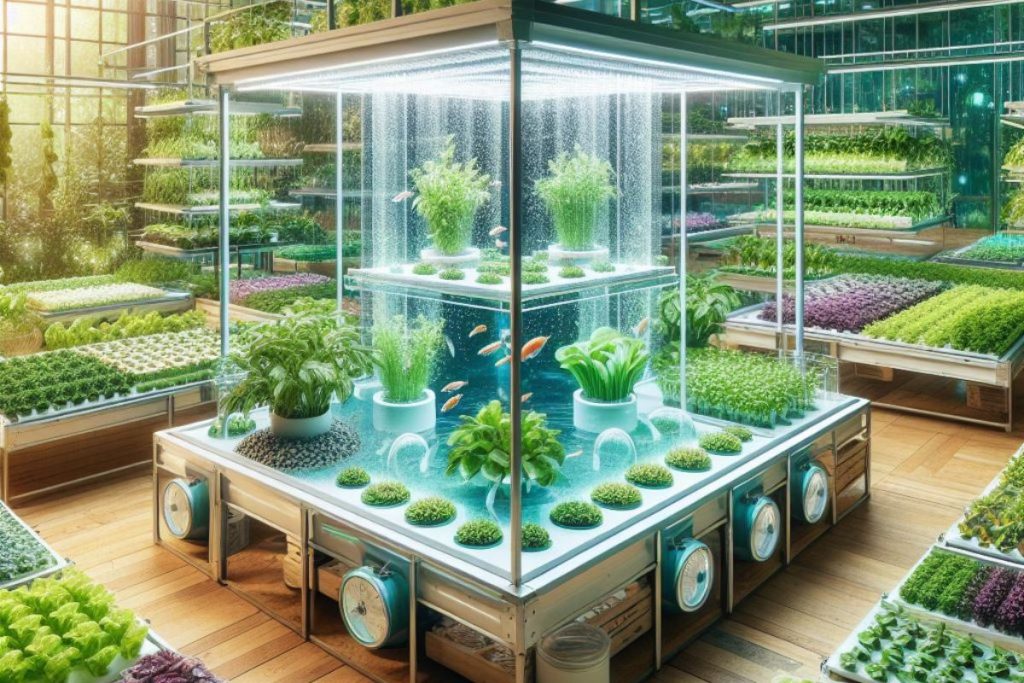
Sustainable Farming
One of the primary advantages of commercial aquaponics systems is their sustainability. Aquaponics is a game-changer in environmentally conscious agriculture by minimizing water usage and eliminating the need for chemical fertilizers and pesticides.
Increased Productivity
Compared to traditional soil farming, aquaponics systems yield crops at a significantly faster rate. This accelerated growth is attributed to the optimal nutrient absorption facilitated by the symbiotic relationship between fish and plants.
Space Efficiency
Commercial aquaponics systems can be set up in limited spaces, making them suitable for urban farming and locations with restricted land availability. The vertical stacking of grow beds maximizes space utilization.
Year-Round Cultivation
With controlled indoor environments, aquaponics allows year-round crop production. This consistency in supply can be a boon for businesses that rely on steady access to fresh produce.
Low Operating Costs
Once your aquaponics system is up and running, maintenance costs are relatively low. The closed-loop design minimizes water and nutrient wastage, resulting in efficient resource utilization.
Setting Up Your Commercial Aquaponics System
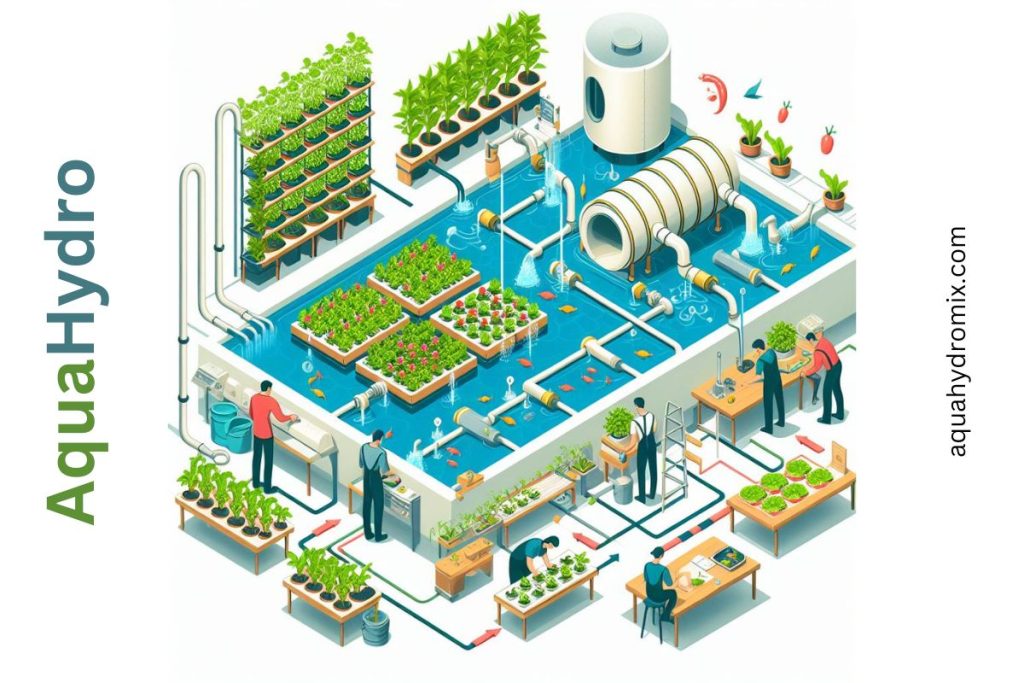
Site Selection
Choosing the right location is crucial for the success of your commercial aquaponics venture. Factors to consider include access to sunlight (for outdoor systems), proximity to markets, and availability of utilities like water and electricity.
System Components
Select appropriate fish tanks based on the type and quantity of fish you plan to cultivate. Ensure proper aeration and filtration systems are in place to maintain fish health.
The grow beds are where your plants will thrive. Consider using grow media such as expanded clay pellets or gravel to support plant growth.
Pumps and Plumbing
Efficient pumps and plumbing are essential for water circulation. Proper water flow ensures that nutrients reach the plants and that filtered water returns to the fish tanks.
Beneficial Bacteria
Introduce beneficial bacteria into the system to facilitate the nitrogen cycle. These bacteria transform the waste produced by fish into nutrients that are beneficial for plants.
Plant Selection
The choice of crops depends on your target market and local demand. Leafy greens, herbs, and certain fruiting plants are popular choices for aquaponic cultivation.
Water Quality Management
Regularly monitor water quality parameters such as pH, ammonia levels, and dissolved oxygen. Maintaining optimal water conditions is crucial for both fish and plant health.
Harvesting and Marketing
Harvest your crops at the peak of freshness and market them to local grocery stores, restaurants, or directly to consumers. Emphasize the sustainable and pesticide-free nature of your produce in your marketing efforts.
Troubleshooting and Maintenance
Algae Control
Algae growth can be a common issue in aquaponics systems. Implement strategies like shading, reduced light exposure, and using natural algae-eating organisms to control algae blooms.
Pest Management
While aquaponics systems are less susceptible to pests, occasional infestations can occur. Utilize natural predators or organic pest control methods to keep unwanted visitors at bay.
Disease Prevention
Maintain vigilant hygiene practices to prevent the spread of diseases among fish and plants. Quarantine new fish arrivals and promptly address any signs of illness.
Challenges and Solutions
Managing System Balance
Maintaining a harmonious balance between fish, plants, and bacteria can be challenging. Regular monitoring, adjustments, and preventive measures are essential to prevent imbalances that could compromise the system.
Dealing with Potential Pests
While aquaponics reduces the risk of soil-borne pests, it’s not entirely immune to challenges. Vigilance and early intervention are crucial to address potential issues and protect the health of both fish and plants.
Addressing System Failures Promptly
Like any farming system, commercial aquaponics may face occasional failures. Swift identification of issues and prompt corrective actions are essential to prevent cascading problems that could impact the entire operation.
Success Stories in Commercial Aquaponics
Notable Examples in Agriculture
Several commercial aquaponics farms have set exemplary standards in sustainable agriculture. Studying these success stories provides valuable insights for newcomers and showcases the potential of this innovative farming method.
Economic Benefits for Farmers
Beyond environmental considerations, commercial aquaponics offers significant economic benefits. Reduced input costs, higher crop yields, and the potential for diversification contribute to the financial success of aquaponics ventures.
Positive Impact on Local Communities
Successful commercial aquaponics operations often become pillars of their local communities. By providing fresh, locally grown produce and creating job opportunities, these ventures contribute to community well-being.
Future Trends in Commercial Aquaponics
Technological Advancements
Advancements in technology continue to shape the future of commercial aquaponics. Automation, sensor technology, and data analytics play a role in optimizing system performance and efficiency.
Integration of Smart Farming Practices
Smart farming practices, including IoT (Internet of Things) applications, are becoming integral to commercial aquaponics. These innovations enhance monitoring, control, and decision-making processes to ensure precision and maximize productivity.
Increasing Popularity and Market Growth
The rising demand for sustainable and locally sourced produce is driving the popularity and market growth of commercial aquaponics. Consumers are increasingly valuing products that align with environmental consciousness, creating a favorable market for aquaponics entrepreneurs.
Tips for Starting Your Own Commercial Aquaponics Venture
Research and Education
Before diving into commercial aquaponics, thorough research and education are paramount. Understanding the intricacies of the system, market trends, and potential challenges will set the foundation for a successful venture.
Collaborating with Experts
Seeking guidance from experienced aquaponics experts can be invaluable. Collaborating with professionals who have hands-on experience can provide practical insights, troubleshoot potential issues, and accelerate the learning curve for newcomers.
Financial Planning and Budgeting
Developing a comprehensive financial plan and budget is essential for the success of any commercial venture. Factor in startup costs, operational expenses, and potential revenue streams. A well-thought-out financial strategy will contribute to the long-term sustainability of the aquaponics system.
Sustainability and Ethics in Commercial Aquaponics
Responsible Farming Practices
In the realm of commercial aquaponics, responsible farming practices form the bedrock of a sustainable and ethical approach. It goes beyond mere cultivation, encompassing a holistic commitment to environmental stewardship and biodiversity preservation. Emphasizing the importance of these practices is pivotal in fostering a conscientious farming community.
Minimizing Environmental Impact
Implementing responsible farming practices involves a concerted effort to minimize the environmental footprint. This includes judicious use of resources such as water and energy, as well as adopting eco-friendly technologies and waste management systems. By doing so, commercial aquaponics ventures contribute to the broader goal of sustainable agriculture.
Ensuring the Well-being of Aquatic Life
The ethical treatment of aquatic life is a cornerstone of responsible aquaponics farming. It involves creating and maintaining conditions that prioritize the health and welfare of the fish within the system. Proper water quality management, spacious and well-designed fish tanks, and adherence to species-specific needs are essential components in ensuring the well-being of aquatic organisms.
Promoting Biodiversity
Responsible farming extends beyond the immediate operation to support broader ecosystems. Commercial aquaponics systems can actively promote biodiversity by integrating native plant species and creating habitats that foster a diverse range of organisms. This approach not only benefits the environment but also enhances the overall resilience of the aquaponics system.
Ethical Treatment of Aquatic Life
The ethical considerations of raising fish in an aquaponics system delve into the humane treatment of aquatic species. This aspect emphasizes the moral responsibility of farmers to ensure the well-being and humane treatment of the fish they cultivate.
Addressing Concerns and Misconceptions
Farmers must address concerns related to the welfare of fish in aquaponics systems. Common misconceptions about crowded conditions, stress, and overall mistreatment need to be dispelled through transparent communication. This involves educating stakeholders about the symbiotic relationship between fish and plants and how it can be achieved with utmost consideration for the fish’s welfare.
Implementing Humane Practices
Humane treatment involves adopting practices that prioritize the comfort and natural behaviors of fish. This includes providing adequate space in fish tanks, maintaining optimal water conditions, and avoiding unnecessary stressors. By adhering to these principles, aquaponics farmers uphold ethical standards and contribute to the well-being of the aquatic life under their care.
In conclusion, commercial aquaponics systems represent a sustainable and innovative approach to modern farming. By harnessing the power of nature’s symbiotic relationships, you can achieve outstanding productivity and profitability in your agricultural venture.
Remember, the future of farming is green, efficient, and sustainable – and it starts with commercial aquaponics systems.
